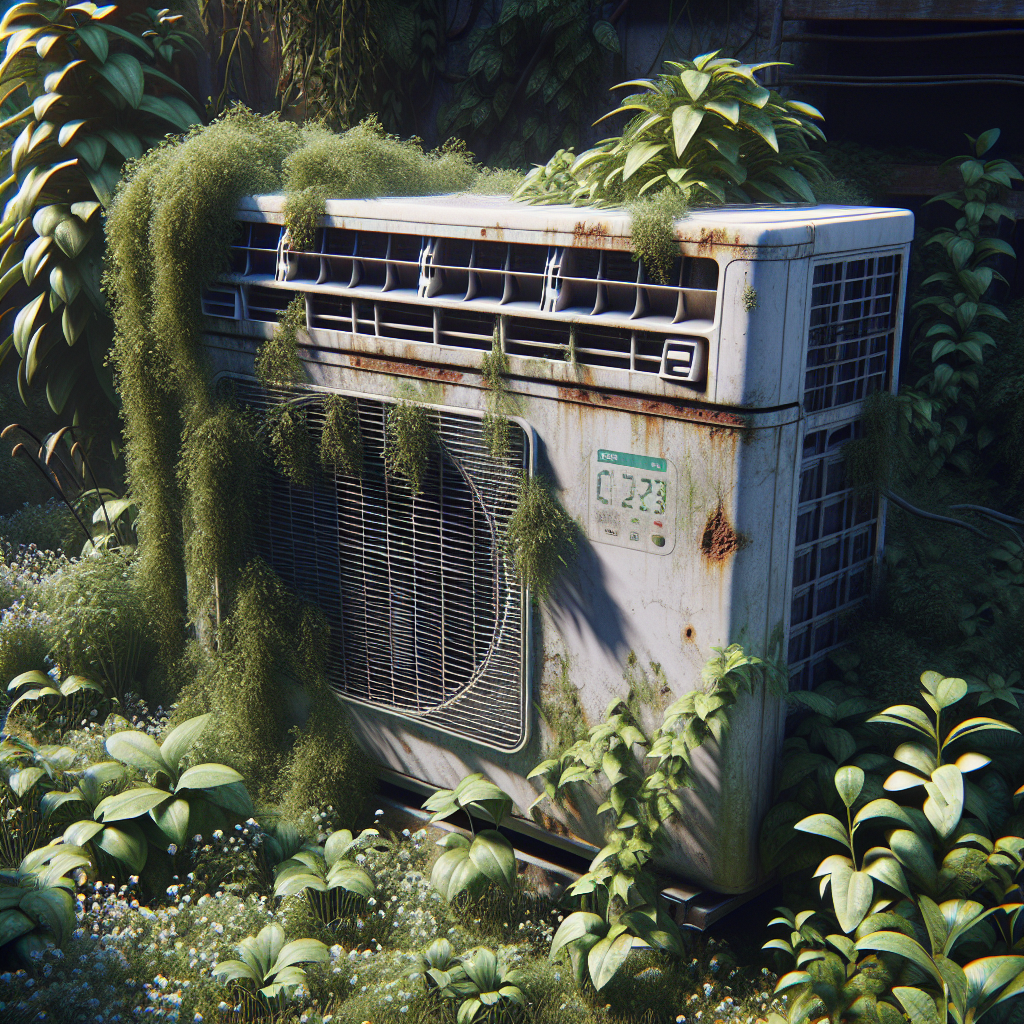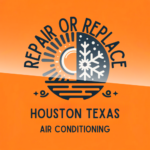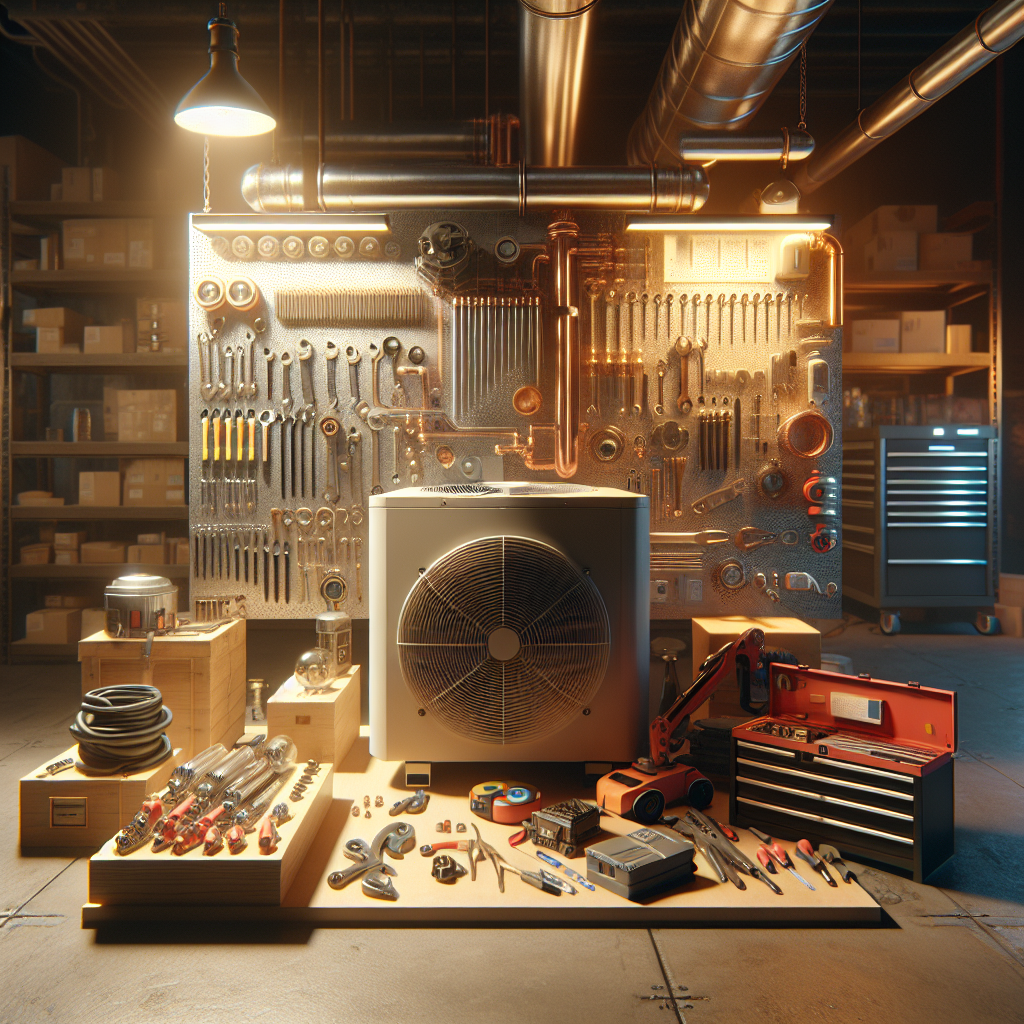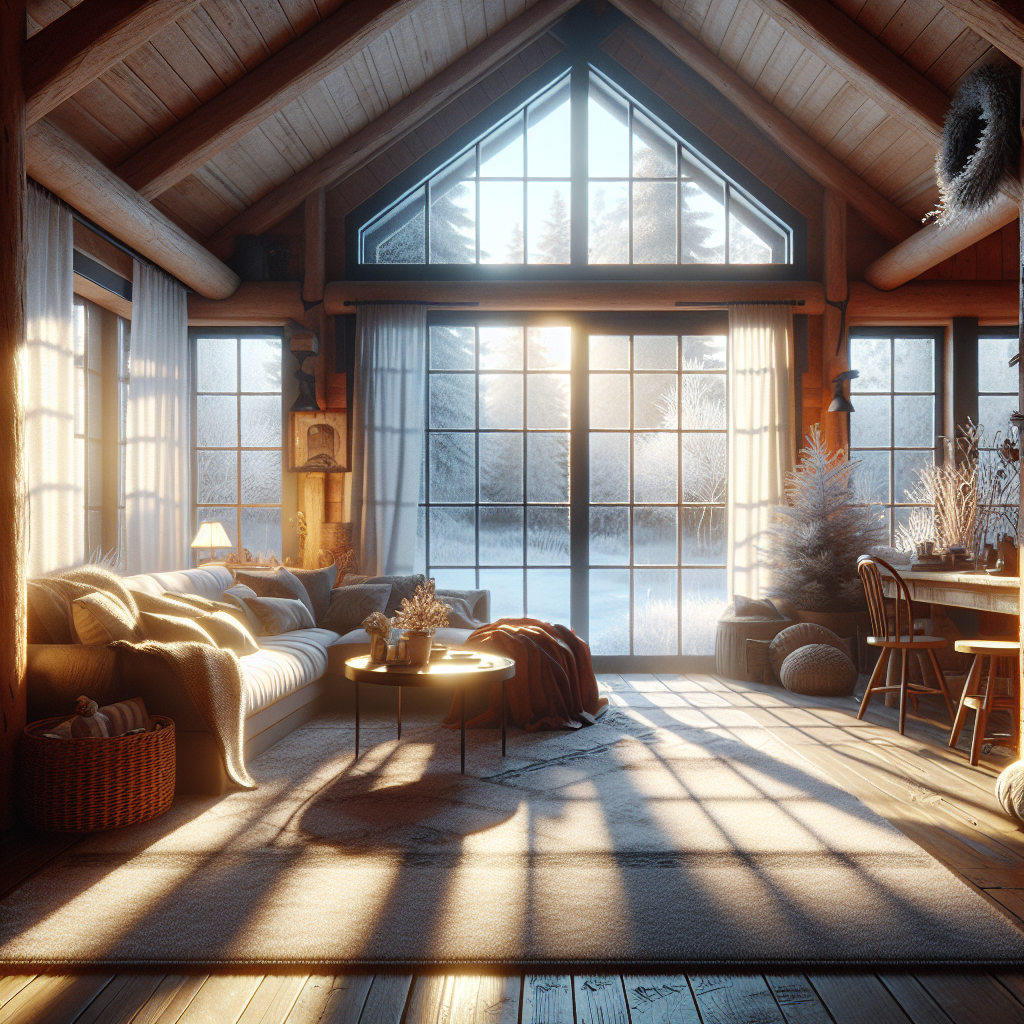It’s a common situation for homeowners to ponder whether it’s time for a change. As appliances age, they often become less efficient, sometimes spiking your energy costs while doing a mediocre job at keeping your space cool.
So, let’s take a closer look at what factors you should weigh if you’re contemplating a switch.
When considering an upgrade, energy efficiency should definitely be at the top of your list.
Newer models can use significantly less power compared to older systems, giving you the chance to save some serious cash on your monthly bills.
Picture this: reducing those expenses while basking in the comfort of a well-cooled home. That’s a win-win for your home’s comfort and energy bills when you replace your 20-year-old air conditioner with energyefficient models during an HVAC upgrade for improved cooling efficiency.
Click here to learn more about: prices.html
Is Your 20 Year Old Air Conditioner Efficient
Let’s chat about your old air conditioner for a moment. If it’s been around for two decades, it’s time to think about how well it’s performing. Older units often lose their efficiency, and that can really take a toll on your comfort, especially when the summer heat kicks in.
Have you noticed your energy bills creeping up more than usual? If so, that can be a big hint that your 20 year old air conditioner just isn’t cutting it like it used to. Many homeowners find themselves in the same boat; if your system’s performance is making you cringe every time you get that bill, it’s probably a good time to reassess your choices.
Frequent repair costs are another sign you need to pay attention to. If you’re shelling out money for fixes often, it might be better to consider an AC replacement. Keep an eye out for pesky refrigerant leaks; they’re a clear warning that your current unit might not be the most energy-efficient option available, and perhaps it’s time to invest in a model that offers better cooling efficiency.
Thinking about your air conditioning lifespan is not just smart; it’s essential for making the best decision for your home and wallet. By swapping out those outdated units, you’ll likely see a drop in repair costs while boosting the system performance. Plus, you could significantly enhance comfort and address issues like those pesky refrigerant leaks along the way.

Understanding Cooling Efficiency Standards
Now that we’ve considered your aging system’s performance and the importance of energy efficiency, let’s talk about some key standards that can guide you in making a smart choice for your next air conditioning unit. Familiarizing yourself with benchmarks like SEER ratings can really help clarify how well an air conditioner works, which affects both your comfort and those monthly utility bills.
What is SEER? The Seasonal Energy Efficiency Ratio (SEER) provides a clear look at your AC’s cooling output during a typical summer season. Essentially, a higher SEER rating means better energy efficiency, resulting in lower utility costs and a fresher, cooler home.
This rating is especially useful when you’re considering an AC replacement. It helps you weigh the pros and cons of whether an HVAC upgrade is worth your investment. When exploring new installations, keep in mind aspects like signs of failure, the unit’s maintenance history, its SEER rating, and even its environmental impact. These factors will ensure you’re making an informed decision that ultimately enhances your home comfort.
| Benchmark | Importance |
|---|---|
| SEER Rating | Indicates energy efficiency of the AC unit |
| Higher SEER | Leads to reduced utility costs |
| Cost-Benefit Analysis | Helps determine if an upgrade is worthwhile |
| Environmental Impact | Considers the ecological footprint of the AC unit |
What Are The Signs Of Failure
As we talk about efficiency standards and upgrades, it’s super important to spot those signs your AC might be struggling. Recognizing these early signs can save you from bigger headaches later and help you figure out if it’s time for an AC replacement.
- Inconsistent Cooling
- If you walk into some rooms and feel like you’ve stepped into a tropical paradise while others feel like the Arctic, that’s a definite red flag. Keeping home comfort consistent is essential.
- Your air conditioning should maintain a steady temperature in every room. If it can’t, it’s time to think about repair versus replace options. Not only does this affect comfort, but it’s also a great chance to look at newer, improved technology that enhances indoor air quality and overall system performance.
- Unusual Noises
- Is your air conditioner making strange clanking, buzzing, or high-pitched sounds? These odd noises could mean there are compressor issues or electrical failures that might lead to emergency breakdowns if you don’t address them soon.
- Frequent Breakdowns
- If your phone is ringing for repairs more than a couple of times each season, that’s a clear sign of potential repair costs piling up. An aging system can end up being less reliable, nudging you to consider new installation options that might save you cash in the long run.
- Refrigerant Leaks
- Spotted any puddles near your AC unit? Refrigerant leaks are a significant sign that your current air conditioning isn’t performing well. Switching to energy-efficient models could provide a better operational lifespan and boost your home comfort.
Recognizing these signs helps you make smart choices. While you assess these immediate symptoms, don’t forget to weigh the long-term benefits of newer, more efficient options to enhance your home comfort and keep those utility bills in check.
Evaluating Repair Costs Versus Replacement
So, you’ve spotted some signs of trouble in your aging systems, and now you’re at a crossroads: should you fix what you have or look into an AC replacement? First things first—how old is your air conditioner? If it’s more than 15 years old, it’s a good idea to really think about its unit efficiency.
Next, take a look at how it’s been performing. Is it always needing repairs, or does it chill your space without breaking a sweat? Checking out some more energyefficient models can help you see the potential savings on your utility bills over time. As you weigh those repair costs, don’t forget to look at the service history. Are those repair bills staying the same, or are they pushing higher every time you call someone for help?
Frequent breakdowns can really pile up both costs and headaches. Considering these factors will not only help you make a smart choice but also shine a light on your longterm savings and the improved technology that’s available now.
AC Unit Decisions
- AC units typically last about 15-20 years, making age a crucial factor in replacement decisions.
- Newer air conditioning models can offer energy efficiency ratings that significantly reduce electricity bills.
- Frequent repairs can indicate underlying issues, leading to higher cumulative costs over time.
- Evaluating service history can reveal patterns to help determine whether to repair or replace an AC unit.
Benefits Of Energy Efficient Models
After thinking about the signs of failure in your current system and looking at the potential repair costs, you might be considering an upgrade. Choosing energy-efficient models can really make a difference, not just in immediate savings but also in long-term financial benefits.
Imagine this: lower utility bills month after month, which gives a nice boost to your budget. These models often feature improved technology that enhances cooling efficiency, so you get better system performance without ramping up your energy consumption.
And let’s not forget, when you invest in modern AC units, you’re also doing something good for the planet. Reduced energy consumption means a smaller carbon footprint, which helps preserve our environment for the future. So, while you’re relaxing in a comfortably cool space, you can feel good knowing you’ve made a responsible choice.
If you’re stuck between dealing with repair costs and opting for a new unit, this might be just the push you need for that AC replacement! Moving on from outdated units often means enjoying quieter operations, too. Many energy-efficient systems are designed to keep noise levels down, making your overall home comfort even better.
Additionally, keep in mind that modern systems usually provide better air filter condition and improve indoor air quality, making your space not only more comfortable but also healthier. Look for models with high SEER ratings, as they are known for their unit efficiency and can result in substantial savings over time.
How Important Is Maintenance History
Now that you’ve thought about the balance between repair costs and the perks of energy-efficient models, let’s chat about why keeping an eye on your AC’s maintenance history is super important. Think of your trusty AC unit as a classic car; without regular check-ups and care, even the best systems can run into some serious problems!
Staying organized with detailed maintenance records isn’t just about being neat; it’s a smart way to protect your investment value. Tracking service history helps you catch minor issues before they turn into major headaches, which can save you both time and money later on.
If you stick to manufacturer recommendations, you’re likely to see a boost in both the lifespan and reliability of your AC system. Many homeowners overlook this vital aspect, but having a documented history can significantly improve your air conditioning lifespan. Are you noticing some signs of failure, like reduced cooling performance? A solid maintenance record could shed some light on the issue.
Seasonal maintenance checks are essential for optimizing cooling efficiency and performance in new installations. These checks help lower the chances of emergency breakdowns and ensure you’re sticking to manufacturer recommendations. Plus, they cover important homeowner considerations like energy consumption and air filter condition, which all contribute to better indoor air quality.
AC Maintenance
- Regular maintenance can extend the lifespan of your AC unit by up to 15 years.
- Proper documentation of service records helps identify recurring issues, leading to proactive solutions.
- Seasonal checks can improve unit efficiency by 5-15%, lowering operational costs.
- Following manufacturer recommendations can keep costly emergency repairs and breakdowns at bay.
Assessing Your Home Comfort Needs
After weighing the perks of energyefficient models and understanding the importance of maintenance history, it’s time to think about how to tailor your comfort needs based on your unique home. Finding your perfect indoor atmosphere goes beyond just temperature; it’s about harmonizing with your home’s characteristics.
The size of your space plays a significant role in choosing the right HVAC setup. For instance, larger areas in homes can require greater cooling capacity to keep things pleasant during those hot Houston summers.
Have you noticed that some rooms feel out of sync with the rest of your home? Identifying your square footage and layout can help you spot those annoying hotspots or chilly corners that could use a bit of attention. Also, don’t forget about your insulation—it acts like your home’s cozy blanket, influencing both comfort and energy consumption.
If your insulation is showing signs of wear, it might be time for a change. Poor insulation can let drafts sneak in, leading to rising utility bills. And we can’t overlook those windows and doors! Are they sealing properly? A quick inspection can boost cooling efficiency and provide longterm savings while avoiding the installation costs tied to outdated units.
Understanding your personal comfort preferences can really make a difference. Whether you like it cooler or prefer a warmer space, these preferences influence how you approach your HVAC upgrade decision. Keeping these factors in mind helps you strike a balance between system performance and your comfort goals.
Whats The Environmental Impact Of Outdated Units
As you explore your comfort needs and how to make your HVAC system work better for you, it’s super important to step back and think about the larger picture with those older AC units. Hanging onto an old system might feel like a money saver, but it can lead to some surprising environmental issues.
How Older Systems Drain Energy
Older AC systems often don’t meet today’s efficiency standards, which means they tend to use way more electricity. In fact, many outdated units can use two to three times more energy than the new, energyefficient models available today. This crazy energy consumption can hit your wallet hard, and let’s not even mention the extra greenhouse gas emissions that come with it, which are not doing our planet any favors.
Performance Issues and Temperature Control
Sure, your vintage unit might provide a bit of cooling, but it usually struggles to keep up with the temperature control you need. This often leads to compressor issues and a drop in overall performance. Modern models, on the other hand, come packed with improved technology that maximizes cooling efficiency and helps cut down your operational costs.
The Benefits of Upgrading
When you decide to invest in a newer air conditioning system, you’re not just improving comfort in your home; you’re also doing good for the Earth by reducing your carbon footprint. These new units are built for durability, often boasting better warranties and reliability, which means fewer breakdowns and minimized repair costs. Plus, who wouldn’t want the longterm savings from lower energy bills while enjoying better system performance?
| Aspect | Older AC Units | Newer AC Units |
|---|---|---|
| Energy Consumption | Uses 2-3 times more electricity | More efficient, lower electricity usage |
| Operational Lifespan | Limited lifespan, prone to issues | Designed for longer operational efficiency |
| Utility Bills | Higher utility bills due to inefficiency | Helps save money in the long run |
| Environmental Impact | Increases greenhouse gas emissions | Lower emissions, more eco-friendly |
Analyzing SEER Ratings For Best Performance
When you’re thinking about your HVAC upgrade, getting a handle on SEER ratings is key to boosting your home comfort without breaking the bank. These ratings are essential for figuring out how energy-efficient your air conditioning system is, ultimately affecting both your day-to-day experience and your savings as time goes on.
A higher SEER rating usually means better energy efficiency, which can translate into significant savings on your utility bills. For example, choosing a model with a SEER rating of 16 might save you hundreds every year compared to an outdated unit.
With energy costs climbing, those savings can really add up, making it clear why system upgrades are a smart option. It’s not just about getting a new unit; it’s an investment that aims for better temperature control and long-term savings. Those ratings have a big impact on your budget and overall comfort. Be sure to keep an eye on crucial aspects like refrigerant leaks, air filter condition, and your maintenance history.
Thinking about that upgrade? Keep in mind that understanding SEER ratings also involves checking out installation costs, warranty options, and brand reputation. By weighing these factors, you can make informed choices that not only improve your system performance but also ramp up your home comfort. Don’t forget to chat with your technician for tailored advice, and think about scheduling a home energy audit to really get the most out of your HVAC system’s efficiency.
CostBenefit Analysis For New Installations
As you look into upgrading your HVAC system and how it can improve your home comfort, it’s important to focus on the financial aspects. Evaluating your options through a cost-benefit analysis can reveal valuable insights that help you make a smart choice.
Installation Costs
Let’s start with those installation costs. Sure, newer models may seem pricey at first glance, but many of these energy-efficient models come packed with features that help you save money later on. A detailed home evaluation can give you a clearer idea of how much you could potentially save over time.
Energy Efficiency
Now, let’s chat about energy efficiency and its impact on your monthly bills. Upgrading to a more efficient model doesn’t just make your space comfier; it can also boost your property’s value—talk about a win-win! Adding smart thermostats can really help optimize your unit’s performance, making it easier to monitor energy consumption and lowering those cooling costs significantly.
- Energy-efficient air conditioning systems can save homeowners up to 30% on their utility bills.
- Smart thermostats can lead to heating and cooling savings of about 10-15% on average.
- Upgrading to a newer model can increase property value by up to 5%.
- Home evaluations are key in spotting potential long-term savings from energy-efficient upgrades.
Winter HVAC Discounts Save You Money
What Size Air Conditioner Do I Need For 2000 Sq Ft House


